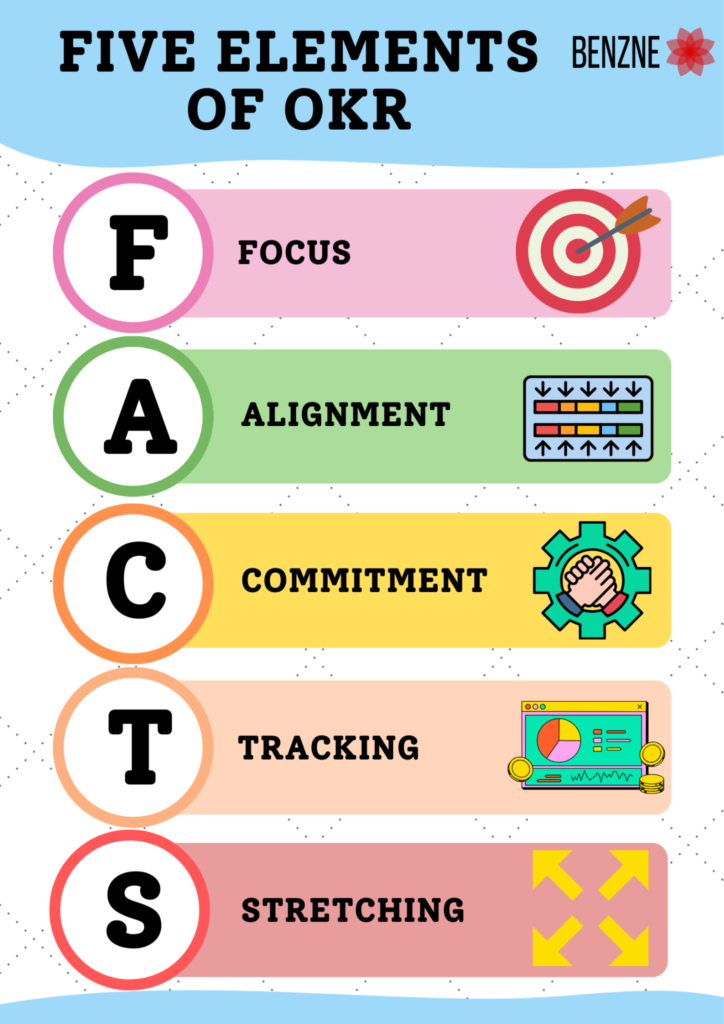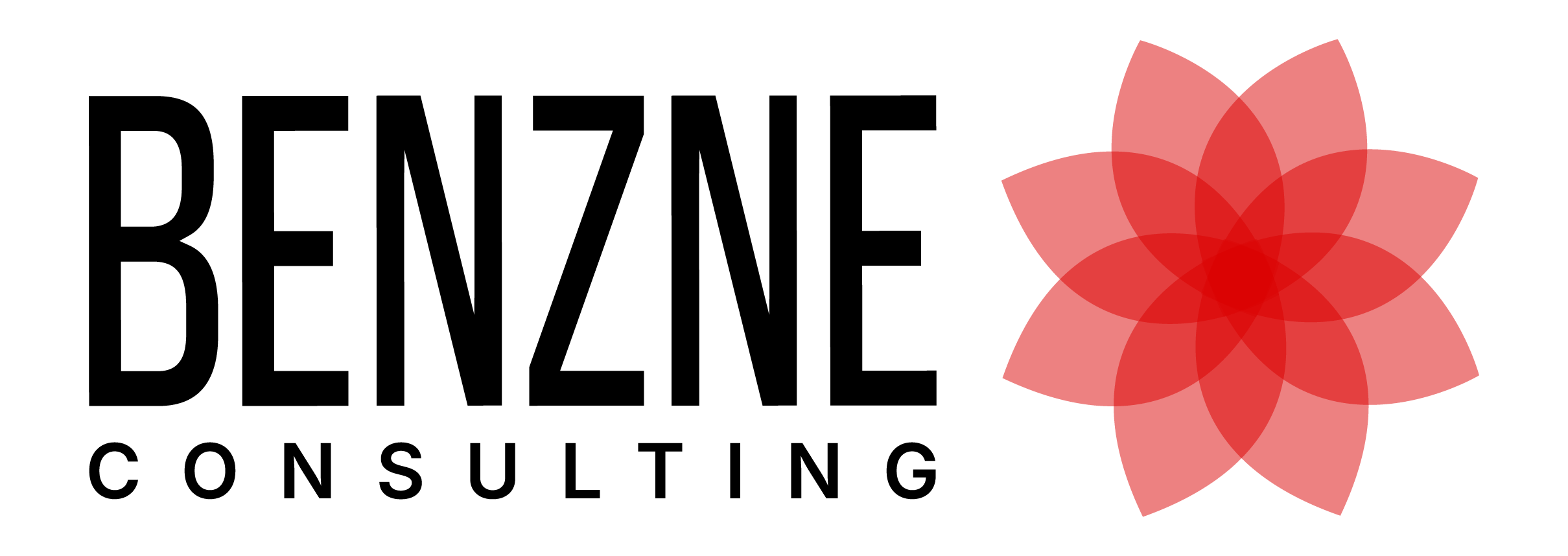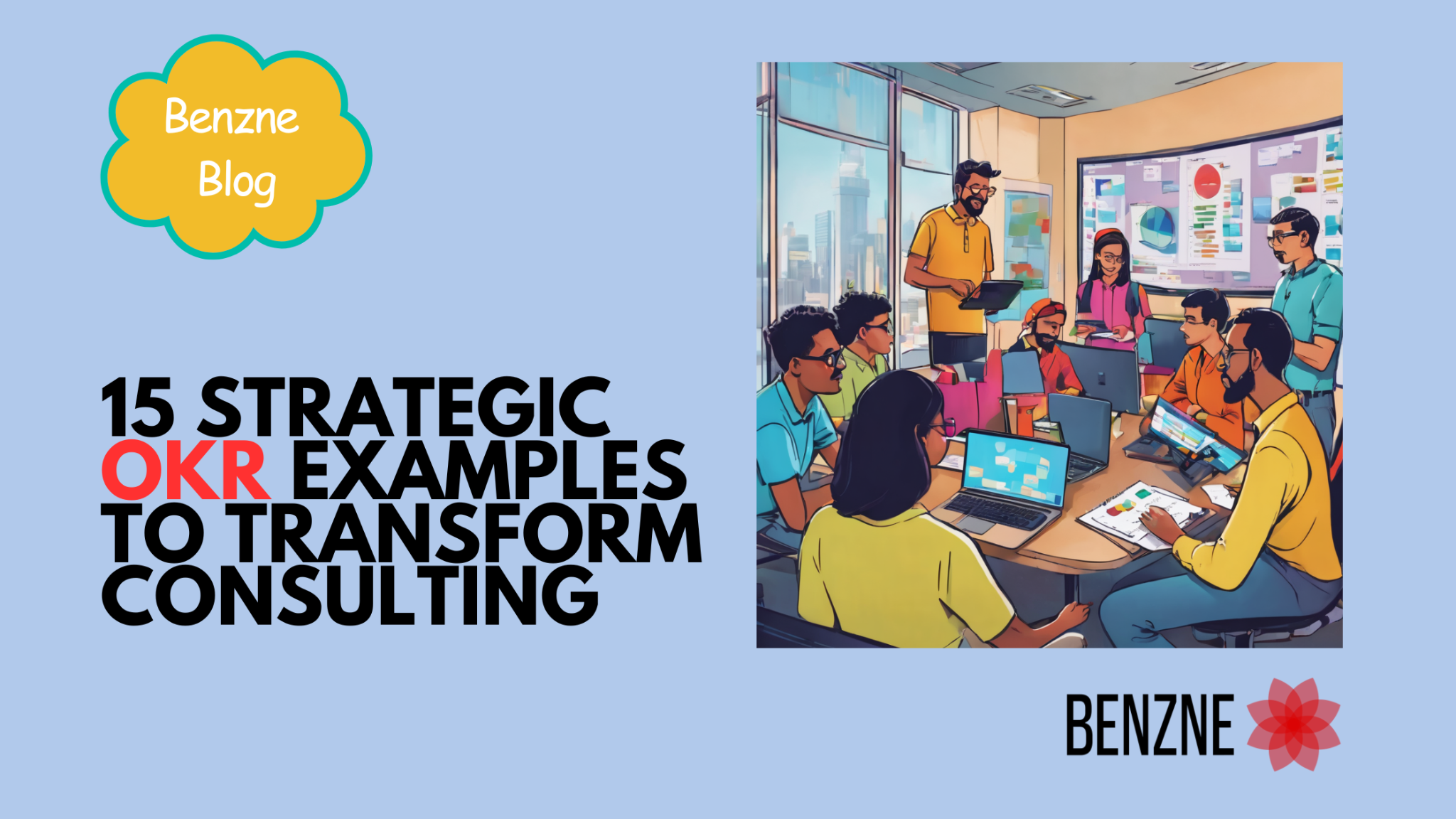Introduction to OKR Examples for Consulting Firms
“Objectives are not commands, they are commitments.” – by Peter F. Drucker
We all have heard a lot of stories on wisdom when we were growing up and I will start this blog by sharing one of my favorite stories – The farmer & his 4 sons.
Once an old farmer lived in a village. He had four sons. They were always quarreling with each other. The farmer tried hard to bring unity among them but they would never listen to his advice. He was very worried about their future.
One day, the old farmer fell sick and decided he should bring unity among his sons. He called his sons and asked them to bring a few sticks. They brought the sticks. The farmer asked the eldest son to tie them in a bundle. He then asked them to try their strength to break it.
Each of the sons tried to break the bundle but failed. Then the farmer untied the bundle and gave one stick to each and asked them to break it. Each of them was able to do it easily.
The farmer said, “Now you understand. If you are united nobody can get better of you. But if you keep quarreling, you will be broken by anyone.”
The moral of the story is that strength is in unity.
In the above story, the farmer had an objective of uniting his sons who if kept quarreling would end up being alone, lose the family wealth and will get manipulated by the society. He could have simply chosen to divide his farming land and let the kids walk away on a separate path but instead he chose to focus on the core values.
Likewise, for an organization to succeed, it is important that it has a clearly defined business strategy which is communicated to everyone so as to attain a common heartbeat. The growth pain triggers for any organization are often lack of alignment, insufficient transparency, safeguarded interests by group-level executives and dissatisfied customers.
Moment when the farmer’s sons realized that together they could succeed and that should be the way forward, the change towards moving in the right direction began. Similarly, the top level strategy should be to bring people together towards the common shared goals and this could be achieved by OKRs or Objectives & Key Results technique.
Today’s world is ever changing, it’s the age of digitalization and what we call as a VUCA (Volatile Uncertain, Complex , Ambiguous) state of present is increasingly being replaced by BANI (Brittle, Anxious, Non Linear, Incomprehensible) future state which will be even more chaotic.
As an agile consulting company, many of our engagements focus solely on shorter business cycles and faster decisions. How does a conventional management system with an annual objective review cycle align with these faster cadences and cycles? This kind of objective setting and review are bound to be counter productive in future.
Conventional approach is top down with siloed, hierarchical and a downward flow of goals. For example, the MBO approach (Management by Objectives) or model improves performance of an organization by defining objectives which are agreed upon. But soon the management loses sight of the objectives as they are caught in a multitude of activities.
In the current phase of Agile ways of working, we are looking at self organizing, closely knit agile teams who are meant to think, work on their own and create value. With this way of working top down approach may not be effective as these approaches are based on linear planning and control. For such agile operating models the OKR system would turn many conventional elements on its head.
What is an OKR?
“OKRs have helped lead us to 10X growth, many times over”. – Larry Page, co-founder, Google
Objectives and Key results is a collaborative goal setting mechanism where we establish high level, measurable goals for business by establishing targets and outcomes that are tracked periodically. OKR was first created by Andy Grove and later popularized by John Doerr. OKRs are simple and flexible depending on how the implementation is done as long as we don’t set them and forget them by getting caught in the activity trap. So how are they different from other conventional approaches of objective setting? The OKRs are frequently set, tracked, reevaluated by engaging with the teams, taking their perspective and creativity into consideration. Let’s look at what each letter of OKR stands for.
An “Objective” in simple terms is “What is to be achieved”. These objectives are actionable, significant and concrete. These are based on strategic priorities.
“Key Results” which explains “How we achieve the objectives” or the “The success indicators”. These key results have to be measurable, achievable, relevant, realistic and time bound.
John Doerr talks about five superpowers of OKRs which include Focus, Alignment, Commitment, Tracking and Stretching.
- Focus: Setting too many objectives for a period of time tends to take away the focus. OKR emphasizes on having fewer objectives ( not more than 3). By limiting the number of objectives and deferring the less urgent ones we are not scattered and stay focussed.
- Alignment: Goal setting with OKRs is bidirectional. Top down and bottom up approach which means goals are set in discussion with the teams. The activities or initiatives that teams perform are tied to the higher level objectives thus making the teams high performing.
- Commitment: Objectives are transparent. Transparency leads to commitment since the teams are involved, schedules and activities are agreed upon. The progress the teams are making are shared across the business thereby further increasing the levels of commitment.
- Tracking: OKRs have built in tracking mechanisms. Cadence based model ensures the progress is tracked. Regular and frequent checkpoints are must-haves in the OKR setting.
- Stretching: Objectives are set in such a way that they are little more than what the teams think is possible. John Doerr says “ Take the moonshots “. You reach for the stars and fail rather than not doing it.

What is the OKR Structure?
Implementing Objective and Key Results needs planning, commitment and regular refinement.
Structurally, OKR could be defined as,
I will —— ( objective) as measured by —–(Key results)
For every objective that is set, have around 2-5 key results. The below structure can be used to set objectives at various levels.
- Leadership team creates a set of objectives for the organization aligned with the strategy. These are at the strategic level. They are ambitious and represent long-term goals.
- Then at the management level/department level the individuals reflect with their teams on how each team supports the org wide objectives. In other words the effort is cascaded to the lower layers. This is at the tactical level which forms a link between strategic and operational level. They have a shorter duration of a few quarters up to a year, and provide medium-term results and impacts. Tactical OKRs are bidirectional, they not only give direction to the teams below but also ensure alignment with the strategic OKRs above, so it is bottom-up and top-down alignment. The key results defined by the teams are aligned with the department objectives.
- To drill down further, individuals in the teams create their key results which inturn are aligned with the team objectives.This is the operational level. They have the shortest duration, Operational OKRs provide a bottom-up impact to tactical OKRs.
To meet the objectives or to put the objectives in action create initiatives or tasks which indicate whether the key results are achieved.
Drive success with the top OKR consulting company. Enhance performance, align goals, and achieve results with expert guidance. Contact us today!
Top 15 OKR Examples for Consulting
We will cover a few OKR examples for consulting below to give you an idea of OKRs in consulting and how it is a powerful tool which can be very effective to align your organizational objectives with the team and individual performance on the ground. Check more about Benzne OKR consulting approach and OKR examples in consulting.
1. Objective: Increase Service Quality across all product lines
Key results:
- Implement NPS flow across all products in 3 months
- Publish Service Quality dashboard by month end
- Increase customers falling in NPS Promoters to 70% of overall customer base
2. Objective: Bring alignment in tracking progress across portfolios
Key results:
- Lean portfolio management (LPM) kick-off by Apr 2024
- Executive dashboards to track portfolio roadmap
- Train & implement on OKRs at Portfolio & level downs by June 2024
3. Objective: Implement Business Agility to sustain in VUCA world
Key results:
- Conduct business agility assessment with ELT members & publish findings by Apr 2024
- Workshop on understanding of business agility, identify goals & measurable action items by May 2024
- Form Value Management Office (VMO) & publish operational & development value streams along with statistical views by July 2024
4. Objective: Ensure 100% Compliance to Regulatory, Security & Stay up to date
Key results:
- Partner with Product Management team & Tech to establish dashboard to track prioritized regulatory & security items of ad hoc & planned nature by Apr 2024
- Conduct quarterly internal audits & assure 100% adherence to mandates
- Conduct periodic external audits twice a year to assure adherence
- Launch a cohort of experts & enthusiasts to stay up to date by meeting fortnightly by Mar 2024
5. Objective: Ensure Employee Engagement to 8+ out of 10
Key Results:
- Conduct anonymous survey to identify gaps & publish analysis on internal company portal, quarterly
- Next 2 quarters, provide trainings on all the skill sets for employees that are rated ‘average’
- Quarterly rewards & recognition in All Hands for top performers
6. Objective: Foster Innovation to improve ‘product’ positioning in the marketplace
Key results:
- Identify 3 New Methodologies respective to product, technology & design aspects
- Participate (as sponsor or speaker) in 8 conferences across India, US & other asia-pacific countries
7. Objective: Strengthen Strategic Partnerships
Key results:
- Enroll partnerships with 5 service providers from US to cater businesses in North America
- Conduct 5 programs to invite and engage new vendors
8. Objective: Reduce Operational Costs by 20%
Key results:
- Normalize remote work by Q3, to check on physical space, international travel & other cost
- Outsource hardware infrastructure management entirely by year-end
9. Objective: Improve Knowledge Management
Key results:
- Integrate EazyBI to automate reports to achieve zero Excel metrics
- 100% knowledge management on collaboration tools by 2025 onwards
10. Objective: Enhance Customer Relationships
Key results:
- Meet 15 existing customers on-premise every month
- Reduce heat to 1 out of 5 on heat-map
11. Objective: Establish a Comprehensive Client Feedback System
Key results:
- Implement 100% feedback collection system at all customer touchpoints
- Integrate ‘Relationship Measurement’ system to monitor customer trust based on interactions to grade & categorize current engagement by Q4
12. Objective: Streamline Operations with Cost-effective Technologies
Key results:
- Create a comparative cost analysis between utilized vs market-available systems by Apr 2024
- Thorough analysis of 3rd party APIs and their benefits vs repercussions by Apr 2024
- Implement agreements by June 2024
13. Objective: Cultivate one team mindset to bring alignment between business, technology & other functions
Key results:
- Conduct an org-wide survey for SWOT analysis by July 2024 & publish findings to the leadership team
- Train leaders to start driving one-team initiatives by May 2024
14. Objective: Increase value delivery speed
Key results:
- Conduct value stream mapping to identify waste & its magnitude by Aug 2024 at platform & product levels
- Automate the build development process by Dec 2024
15. Objective: Implement Diversity and Inclusion Program
Key results:
- Develop strong anti-discrimination policies & publish by July 2024
- Mandatory training to all the employees on DEI activities by Oct 2024
How consulting firms are helping businesses?
Benzne Consulting is partnering with organizations in bringing strategic alignment to drive business agility & implementing OKRs has played an enormous role in driving that change. As consultants, we need to conduct the as-is assessment, focused workshops with leadership to learn & address their concerns, conduct health checks to bring out discrepancies and then drive a systematic plan to lead the transformation by curating OKRs and partnering with all levels to implement, monitor and improvise.
Conclusion
A good OKR model when implemented right, tracked frequently and set in collaboration with the teams enables teams to be high-performing and more productive.
OKR framework brings focus only on what’s most important by prioritizing the work with the biggest impact. Teams and individuals take part in objective setting so they know exactly what’s expected of them and are therefore able to prioritize tasks and allocate resources effectively. We hope this blog on OKR examples in consulting adds value to your understanding of OKRs and how they can be adopted in real world environment. Please do write to us at consult@benzne.com if you have any feedback or would like to engage with us to implement OKRs in your organization.
FAQ Questions:
1. What are the 5 elements of OKR?
The five elements are abbreviated as FACTS – Focus, Alignment, Commitment, Tracking and Stretch.
2. How do you write an OKR statement?
Define your objective which is SMART in nature. SMART stands for Specific, Measurable, Achievable, Relevant and Time-bound. For every objective write 2-5 key results which are measurable, focussed and time bound. Ensure the key results contribute to the achievement of the objectives.
3. What is a good OKR objective?
A good OKR statement must fit in a single line. It should be actionable, aligned with the organization strategy, and ambitious. It should also be relevant to the big picture and realistic. It should allow the progress made against it to be tracked. The objective should clearly define the timelines for achievement. Please check a few of the OKR examples listed in this blog to gain a better understanding.
4. What is the difference between OKR and objectives?
Objectives are goals that an organization or an individual wants to achieve.In other words what is it that you want to achieve? These have a direction and purpose. These are qualitative in nature whereas OKRs are goal setting mechanisms which define objectives and its key results. These objectives of OKR are goals that are to be achieved like “Objectives” but these ones are quantitative and must specify the timestamp for achievement of the objectives.
5. How do you measure OKR success?
The key results that are set for the objectives are a good measure of progress towards achieving the objectives. Before starting with objective setting it is essential to establish a baseline metrics for every key result. OKR framework allows to monitor and track the progress at a predefined cadence. Periodic review of the progress allows you to do course corrections wherever needed. Have CFR (Conversations, feedback, recognition) to develop a highly motivational culture.


Keep up the great work! Thank you so much for sharing a great posts.